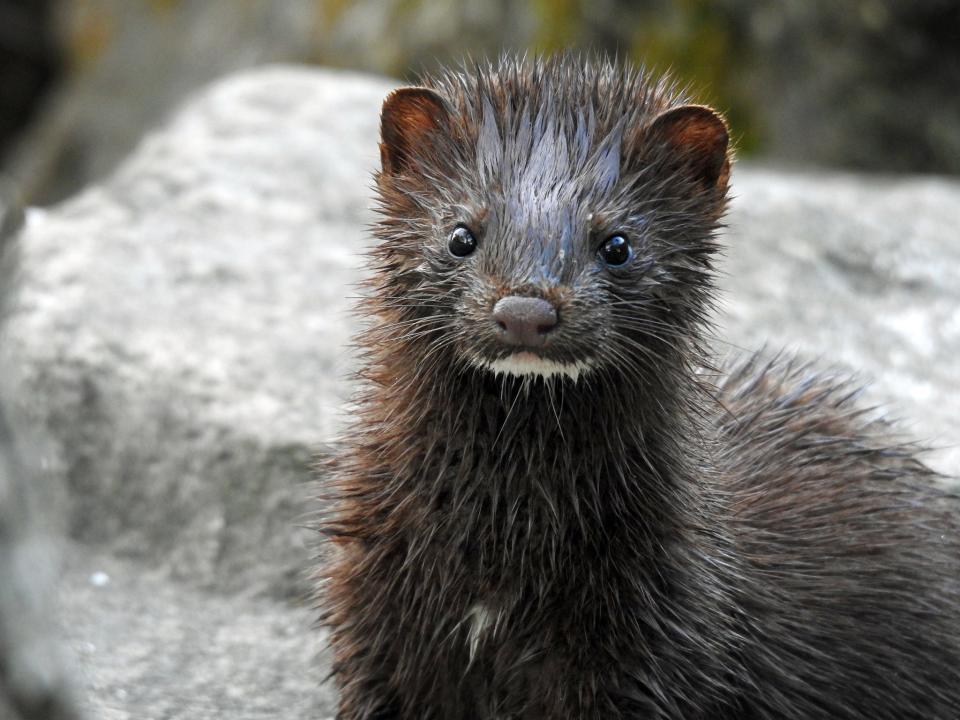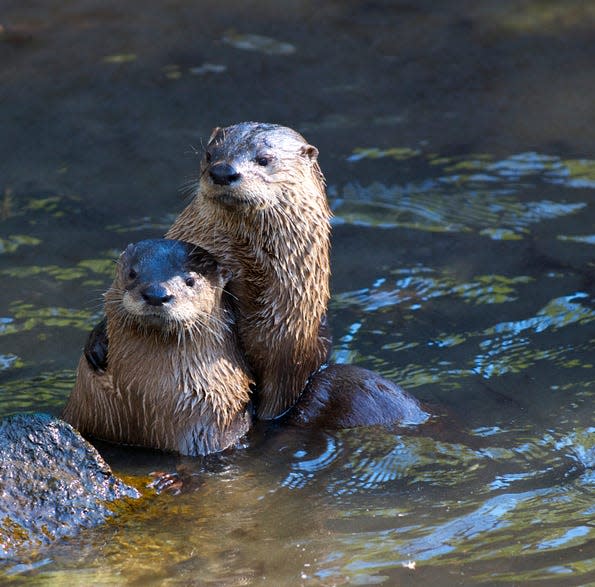Otters, mink are rare residents of our rivers and streams
Two species of water-loving mammals were once widespread in North Central Texas and Southwestern Oklahoma but their populations declined after human settlement, habitat modifications and a past demand for their warm, thick, waterproof furs. One rarely ventures far from permanent waters; whereas, the second is more adapted to traveling on dry land but still has an affinity for rivers, streams, ponds, and marshy areas. These seldom seen hydrophiles are the American Mink and the Northern River Otter.

Both are mustelids and have a pair of scent glands they use for marking dens and territory and for limited self-defense. Neither the mink or the river otter can direct their spray as accurately as skunks, but their odorous defences are still pungent and discouraging to potential predators. The musk/scent from mink was once used as an ingredient of some perfumes and mink oils have well established applications as waterproofing and leather conditioning agents and as components of various lotions, skin and hair care products.

American Mink and Northern River Otters have long, slender bodies and relatively long tails. Mink are approximately two feet in length and have short legs and rather bushy tails; whereas River Otters are more than twice the size of mink: averaging 28 inches in body length with an average tail length of 15 inches. In contrast to the mink’s tail, the tail of a river otter is wide at its base and tapers to a pointed tip. Because their legs are short, both mink and river otters walk and/or run on dry land with a looping, humped-up motion. The color of the mink is a dark, chocolate brown with a white spot underneath the chin and, occasionally, some additional white spots on the neck and belly. The mink’s head and face is triangular-shaped with long whiskers, small, dark eyes, and short, rounded ears. The river otter is brown to gray with a grayish-white chin and throat and silvery-colored belly and underparts. Its head is small and has a prominent, dark nose and long, distinctive whiskers on the cheeks and snout. The ears of river otters are smaller than those of mink and have have valves which prevent water from entering the auditory canals when the otter is submerged. Otters are the only North American mustelids with completely webbed feet; whereas, mink have a slight web of skin on their hind feet and thick tufts of hair between their toes. With their long, streamlined bodies, mink and river otters are strong swimmers and can remain submerged for several minutes while searching for food items and avoiding predators.

Mink and river otters live along rivers, streams, lakes, marshes, water impoundments and other areas. Both species are capable of long distance travel, foraging, and dispersal; but river otters prefer habitats with permanent, preferably clear waters for swimming, foraging, and play activities. Mink are more terrestrial and, in wooded areas, will readily climb trees to forage among the branches and between trees. River Otters utilize and/or construct dens adjacent to permanent water and may make conspicuous mud-slides along the the banks of rivers, streams, and lakes where they belly-slide down into the water. The entrances of some otter dens are located beneath the water’s surface and a single otter may utilize several dens within its foraging area. Mink usually den close to water and utilize hollow trees, rocky crevices, burrows, old flood debris, and brush snags as denning sites. Neither species hibernates during the winter but may remain in their dens during extremely cold periods; otherwise, river otters seem to enjoy cold temperatures and habitually swim beneath the ice of frozen streams, rivers, and ponds. The otters surface for air at holes they punch through the ice and may bring along a captured fish to consume on the ice or within a nearby den.
Mink and river otters are crepuscular and nocturnal predators with varied diets. Fish, frogs, crayfish, snakes, turtles, birds, and bird’s eggs are included in the diets of both mammals. Because of their more semi-aquatic lifestyle and habits, river otters probably consume greater quantities of fish and crayfish; whereas, the more terrestrial and arboreal mink add more birds and eggs, mice, squirrels and small rabbits to their diet. Mink are among the few species of animals known to kill more prey in a single foraging episode than they can consume: usually dispatching their prey with bites along the neck. Mink can be dreaded predators of chickens and other domestic fowl. I recall an incident on the farm when something began to raid our chicken coop and kill one or more chickens every night with little evidence of eating them. We finally captured the culprit and discovered that it was a mink! Mink and river otters have few predators other than occasional predation by coyotes, bobcats, and humans.

Mink mate from mid-winter to early spring and river otters probably mate during the fall. Both species undergo delayed implantation and females may not give birth for approximately nine to 11 months. Mink and river otters lead solitary lives except for brief periods of courtship and females raising their young. A mink’s litter averages three to four young; whereas, a river otter’s litter is usually two young. The young of both species are called kits. Mink kits are weaned at two months and river otter kits nurse for four to five months before weaning. Both species are vocal and communicate by squeals, hisses, growls, and, in the case of river otters, chirping calls. The lifespan of wild mink is approximately two years; whereas, wild river otters may live longer than 10 years. River otters do not attain maturity until they are two to four years old.
Although both are considered fur-bearers in Texas and Oklahoma, neither are taken in large numbers and indications are that their populations may be increasing. Mink and river otters are rare in our area but searching for these elusive animals is worth the effort!
This article originally appeared on Wichita Falls Times Record News: Otters, mink are rare residents of North Texas rivers and streams

